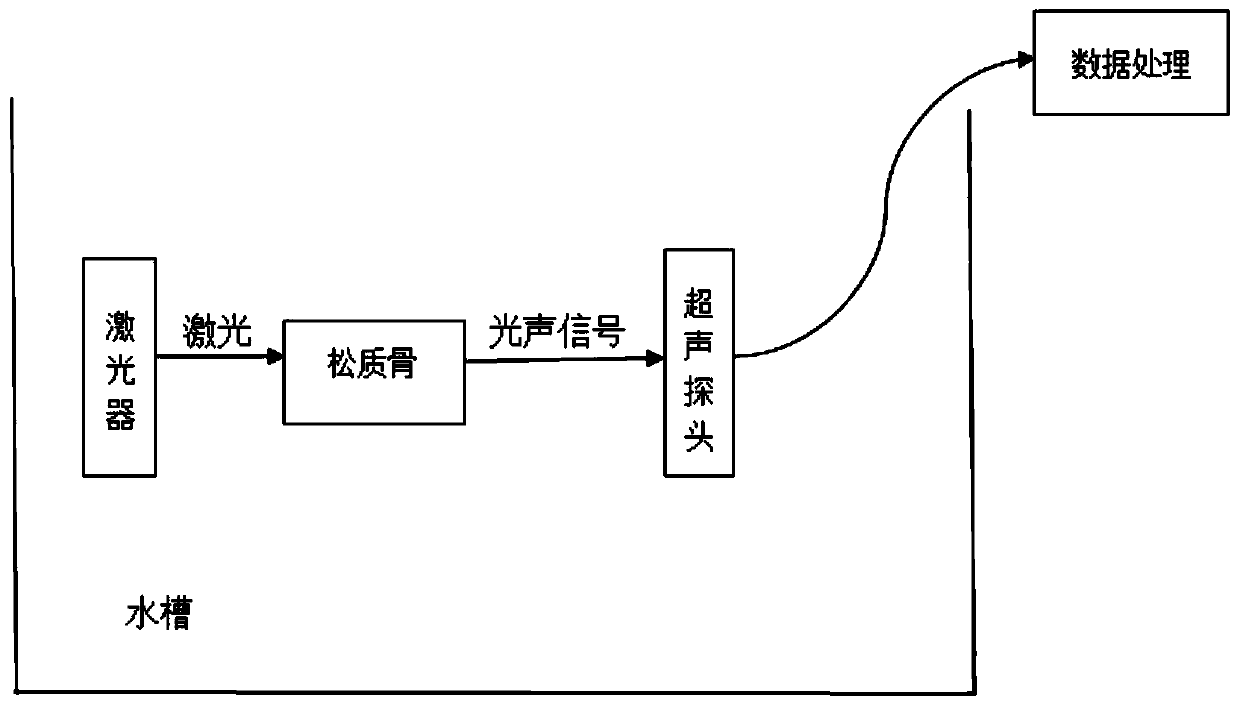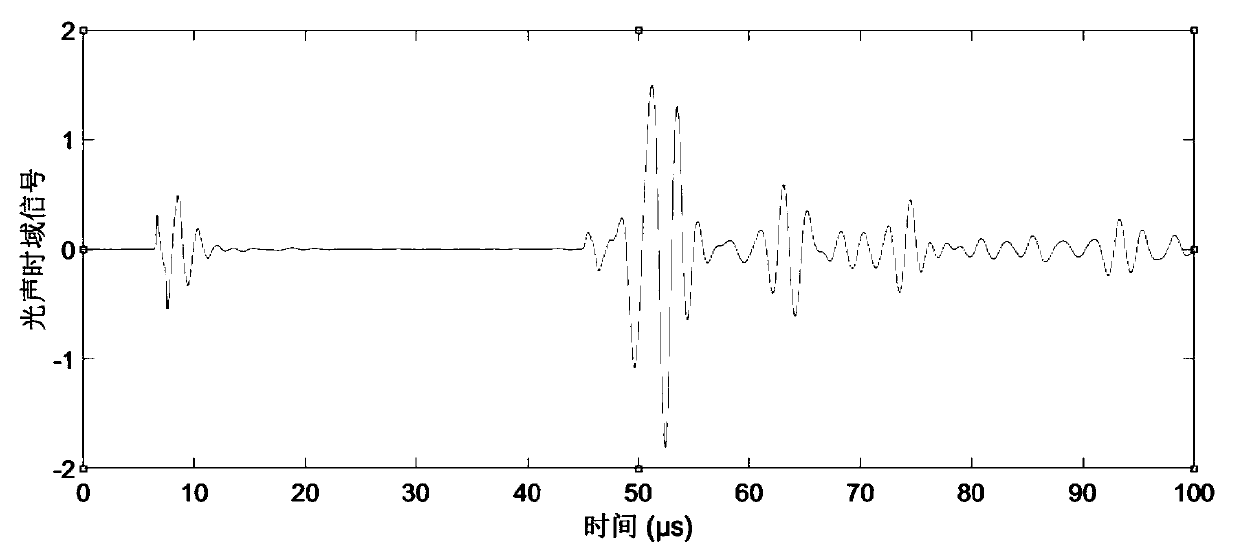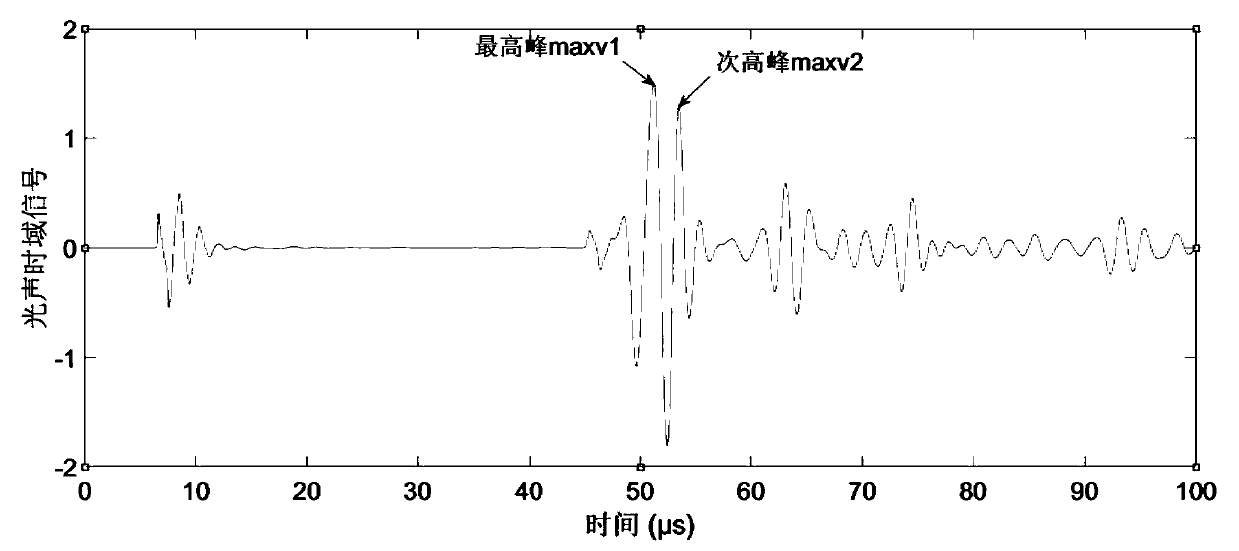Method for evaluating bone elasticity moduli by using photoacoustic time-domain signals
A technology of elastic modulus and time domain signal, which is applied in the fields of application, diagnostic recording/measurement, medical science, etc., to achieve the effect of avoiding X-ray transmission, good safety, and improving evaluation ability
- Summary
- Abstract
- Description
- Claims
- Application Information
AI Technical Summary
Problems solved by technology
Method used
Image
Examples
Embodiment
[0045] combine figure 1 , the present invention utilizes photoacoustic time domain signal to estimate the method for bone mass elastic modulus, comprises the following steps:
[0046] Step 1. Adjust the parameters of different bone trabecular materials to obtain cancellous bone models with different bone elastic moduli;
[0047] The trabecular bone material parameters include trabecular bone density, trabecular bone Lame constant, and trabecular bone thickness, wherein the trabecular bone density, trabecular bone Lame constant, and bone trabecular thickness are all related to bone elastic modulus Proportional.
[0048] Step 2. Simulating cancellous bone models under different bone elastic moduli to obtain corresponding photoacoustic time domain signals;
[0049] Step 3, preprocessing the photoacoustic time domain signal, including noise reduction and signal correction;
[0050] Step 4. Quantify the corrected photoacoustic time-domain signal to obtain the relationship betwee...
PUM
 Login to View More
Login to View More Abstract
Description
Claims
Application Information
 Login to View More
Login to View More - R&D
- Intellectual Property
- Life Sciences
- Materials
- Tech Scout
- Unparalleled Data Quality
- Higher Quality Content
- 60% Fewer Hallucinations
Browse by: Latest US Patents, China's latest patents, Technical Efficacy Thesaurus, Application Domain, Technology Topic, Popular Technical Reports.
© 2025 PatSnap. All rights reserved.Legal|Privacy policy|Modern Slavery Act Transparency Statement|Sitemap|About US| Contact US: help@patsnap.com



